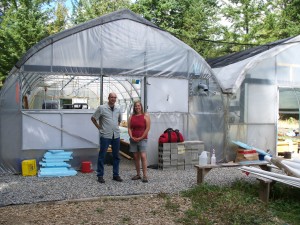First, a warning: there is a nasty piece of ransomware that lately been attacking unsuspecting computers. It’s the Cryptolocker virus. It attacks your system by encrypting it and then holding your hard drive for ransom. If you get hit with this, there is not a lot you can do to recover the drive. Some sources online suggest that paying the ransom is the only way to get it back. I say no way!
Prevention is your best ally. There are three things you should always do to keep yourself safe online:
- Make sure you backup your system to a drive not on your computer. A backup service, such as Mozy, can put your backups on autopilot. Backing up to an external hard drive works quite well, too. Both of these are reasonably priced and really beat the loss of all your data. With a backup in place, you can replace your hard drive with a new one, reload your operating system, and restore your data without too much expense, certainly less than paying a ransom.
- Download the free version of MalwareBytes and have it run scans frequently. This program finds Trojans and other malware on your system and eliminates them before they have a chance to do their evil deeds. Add this program in addition to your anti-virus.
- Encrypt your system yourself. This protects you from all kinds of nasty things besides just Cryptolocker. Just remember that if you lose your password to unlock your encrypted drive, there is no way to recover it. Make sure you write it down and keep it, and copies of it, available.
Now, here’s the best deal I’ve found in a long time: Republic Wireless has the best prices on cell phone coverage I’ve ever seen. It starts at $10 a month for unlimited calls, text, and data. (I know!) If you want 3G or 4G, the plans are a bit more, as much as $40. (Again, an “I know!” with exclamation points!)
There are, of course restrictions and stipulations. You definitely need to have broadband at home. You have to use their one phone, Motorola’s Moto X, which costs $299 but is a good Android phone. Over the course of two years, which is how you should always price cell plans, you would only pay $240. That’s amazing! That’s what many people pay for just two months of service.
What makes this possible is the software that Republic Wireless has pioneered. It essentially pushes everything, including your calls, through the internet, if it’s available. If it isn’t, then calls, texts, and data go to cell service seamlessly. This plan isn’t for everyone, but for those who have good access to wi-fi, there’s nothing wrong with saving some green.


